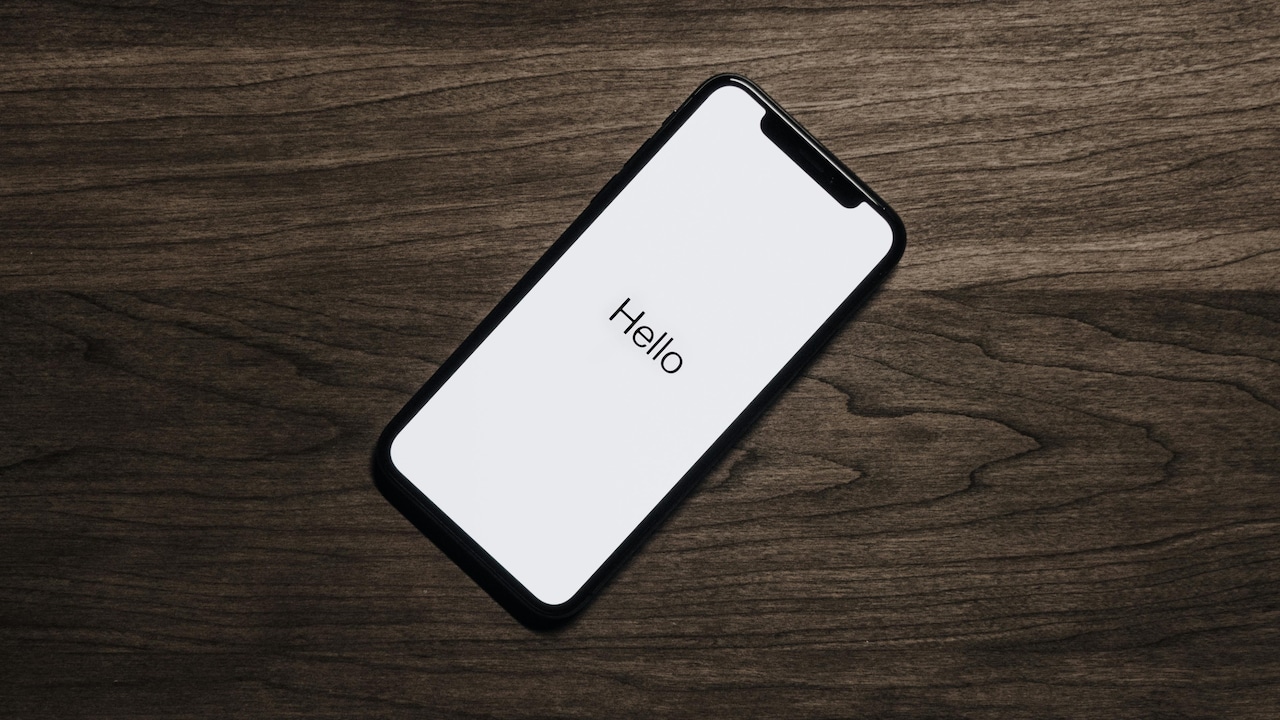Samsung Galaxy Z TriFold Price, Camera, And More: What To Expect From This 3-Screen Smartphone
Samsung Galaxy Z TriFold phone that folds not once but twice, slipping neatly into your pocket and then unfolding into a full tablet when you need it. Set for debut at the APEC 2025 Summit, what really makes it special? Let us dive in.

Samsung Galaxy Z TriFold Packs Tri-Fold Screen, Could Change How You Use Your Smartphone.
Over the past few years, smartphones have begun to bend, flip and fold in every imaginable way. Yet just when it seemed Samsung had reached the limit with its Galaxy Z Fold 7, the company unveiled something even more daring, the Samsung Galaxy Z TriFold. Instead of two panels joined by a single hinge, this new creation boasts three panels.
It's a design leap that could merge the worlds of phones, tablets and even lightweight laptops. For anyone who juggles between a device for calls, another for work, and a third for entertainment, this could be the long-awaited all-in-one solution.
Here's a closer look at 10 reasons why this futuristic foldable might just change the way you use your phone. Interested? Check here Samsung Galaxy Z TriFold price, camera, battery and much more.

Things you need to know all about the anticipated release of the Samsung Galaxy Z TriFold; Photo Credit: IceUniverse
1. Samsung Galaxy Z TriFold's Design That Turns Heads
Samsung's D-shaped tri-fold mechanism isn't just a gimmick; it's an evolution of its foldable philosophy. The device features three distinct panels, enabling it to transform from a compact smartphone into a near-10-inch tablet in seconds. When folded, you get a 6.5-inch cover screen for quick access to messages, calls or notifications. Unfold it fully, and you're staring at a 10-inch AMOLED display, perfect for productivity or immersive streaming.
Samsung has placed the cover screen in the centre panel, balancing usability and aesthetics. The left segment houses the camera system, while the right serves as the supporting frame. Tiny ergonomic tweaks, such as a gentle inward curve near the fingerprint reader, make it more comfortable to hold despite its complexity.
It's the kind of design that draws curious looks on the metro. Imagine casually flipping open your phone into a tablet while everyone else squints at theirs. The TriFold isn't subtle; it's a statement.
2. Large Display, Compact Everyday Usability
Foldables often walk a fine line between utility and convenience. The Samsung Galaxy Z TriFold strikes that balance cleverly. Its outer display makes it feel like a standard smartphone, handy for WhatsApp, maps or UPI transactions on the go. Open it up, and you've suddenly got a mini-tablet that's ideal for Netflix, YouTube, gaming, or editing presentations.
In a city where commutes can stretch an hour or more, that's an underrated luxury. One can start a show while travelling and finish a work document during the same ride. The visual experience should feel crisp and immersive, thanks to Samsung's Dynamic AMOLED 2X panels and adaptive refresh rates that keep scrolling buttery-smooth.
Of course, having such a large display brings challenges, weight, battery consumption, and heat. But if Samsung's engineering holds up, it could mark the beginning of a new hybrid category: part-phone, part-tablet, and completely flexible.
3. Power Under the Hood: Snapdragon 8 Elite and Beyond
Beneath the sleek panels lies some serious muscle. The Galaxy Z TriFold is expected to run on Qualcomm's Snapdragon 8 Elite chipset, the same processor that powers Samsung's flagship S-series devices. Paired with up to 16 GB RAM and 1 TB storage, it's built for heavy multitasking.
From video editing and gaming to juggling half a dozen productivity apps, this phone won't break a sweat. Samsung has reportedly tuned its One UI 8 (based on Android 16) to handle the tri-screen setup seamlessly, so users can drag, resize and open multiple windows at once.
Think of it as carrying a small workstation in your pocket. That's especially handy for professionals who edit reels, trade stocks, or manage multiple accounts, no laptop needed.
This is power wrapped in innovation, not just performance for performance's sake.
4. Galaxy Z TriFold Camera Setup: A Fresh Perspective
Samsung's premium phones are known for their cameras, and the TriFold continues that tradition. Leaks suggest a triple-camera system with a 200MP main sensor, 12-MP ultra-wide and a 3x telephoto lens. The device could support up to 100x digital zoom, making it a photographer's playground.
For casual users, this means less reliance on professional gear. Weddings, festivals or late-night shots by the sea, it's designed to perform in any setting. Video creators will also appreciate enhanced stabilisation, 8K recording, and AI-powered editing tools baked into Samsung's latest software suite.
The punch-hole selfie camera remains discreet, maintaining that edge-to-edge cinematic feel. So whether you're capturing a family trip or creating YouTube shorts, expect images that look effortlessly professional.
5. Galaxy Z TriFold Price: Not for Everyone, but for the Brave
Innovation often comes with a price. Reports place the Galaxy Z TriFold around US $2,800, translating to nearly ₹2.3 – ₹2.5 lakh, though some expect Indian retail pricing to touch ₹2,01,999 – ₹2.4 lakh.
That's premium territory, comparable to a high-end laptop or a second-hand car. But price aside, it's also a statement about where foldable technology stands today. Early adopters who invest in such tech often pave the way for wider, more affordable models down the road.
For everyday buyers, this might not yet be the “value” phone, but it represents a glimpse into what mainstream devices might offer in a few years, multi-mode flexibility, advanced durability and unbeatable multitasking. The TriFold is less about affordability and more about aspiration.
Also Read: Unfolding The Future: Top 5 Foldable Phone Brands To Look Out On Amazon
6. Availability: A Select Launch Strategy
Samsung appears to be treading carefully with its tri-fold rollout. Reports indicate that the Galaxy Z TriFold will first launch in South Korea, China, Singapore, Taiwan and the UAE, with limited units (between 50,000 – 200,000).
That means it may not officially hit Indian retail stores immediately after its October 31 2025, reveal. Early enthusiasts might need to import it or wait for a phased global launch later in 2026.
This cautious approach makes sense. Foldable devices involve complex engineering and high production costs. By limiting markets initially, Samsung can gather feedback, fine-tune durability and gauge consumer reactions before a full-scale release.
So while some fans might grumble about the wait, patience could pay off, especially if the second wave brings better pricing and region-specific support.
7. How It Could Change Daily Routines
The real question isn't just what the TriFold can do, but how it might change how people use their phones day to day.
Imagine this: you're replying to messages on the smaller screen, but when your boss calls for a quick slide edit, you unfold it into a 10-inch workspace, connect a Bluetooth keyboard, and finish the task in minutes. Later, on the same device, you stream your favourite show on OTT or game using the unfolded tablet mode.
The tri-fold's versatility could encourage a shift in habits. Students could study on digital books more comfortably. Designers might sketch directly on-screen using a stylus. Even video calls could feel more natural with the extra space.
It's that rare gadget that promises to make everyday tech use simpler rather than just flashier.
8. Battery, Durability and Build Quality
Foldable phones have always faced scepticism around battery and durability, and the TriFold will have to prove itself here. It's tipped to feature a 5500 mAh battery, which, if managed well, could last a full working day despite the larger screen.
Samsung has reportedly introduced silicon-carbon battery technology, boosting efficiency while keeping the weight manageable. Charging speeds could also match the 45 W fast-charging standard of its flagship devices.
As for durability, early design leaks point to a titanium frame and reinforced ultra-thin glass that's rated for thousands of folds. Still, real-world conditions, dusty pockets, humidity, the occasional drop will be the true test.
The TriFold's engineering brilliance will mean little if hinges creak or displays scratch easily. Fortunately, Samsung's track record with the Z Fold series offers optimism that this version will hold up better than ever.
9. The Ecosystem and Future of Foldables
The TriFold isn't arriving in isolation. Samsung's broader ecosystem, including the Galaxy Watch, Galaxy Buds, Galaxy Tabs and even the upcoming Galaxy XR headset, ensures seamless integration across devices.
For users deep in the Samsung ecosystem, this tri-fold phone could become the central hub. Transfer a call to your tablet, pick it up on your buds, and continue typing seamlessly on your TriFold. It's that connected experience that adds subtle everyday convenience.
Moreover, this launch may signal a future where foldables no longer feel experimental but mainstream. As prices drop and production scales, tri-fold designs might eventually become the new standard, thinner, lighter and more accessible.
In short, this phone isn't just another flagship; it's the shape of what's next.
10. Should You Buy or Wait?
That's the big question. If you're a tech enthusiast who loves being first, the TriFold is an irresistible prospect. You'll get bragging rights, a head-turning device, and a fresh take on mobile productivity.
However, if you prioritise stability, service support and value for money, waiting might be wiser. Prices often settle within months, and the next revision may iron out early issues.
Ultimately, the Galaxy Z TriFold isn't about replacing every phone today. It's about showing what's possible when a brand takes a bold leap. And if history is any guide, this could be the first of many tri-folds to come.
The Samsung Galaxy Z TriFold stands at the crossroads of imagination and practicality. It combines the portability of a phone with the spaciousness of a tablet and the raw power of a laptop, all within one meticulously engineered body.
It's expensive, yes. It's limited at launch, yes. But it also marks a pivotal moment in smartphone evolution, one where design innovation begins to meet real-world usability. For users who crave versatility, creativity, and that hint of future-ready flair, the TriFold could genuinely change how they use their phones.
Foldable technology has come a long way. With the TriFold, Samsung may have just unfolded the next chapter.











